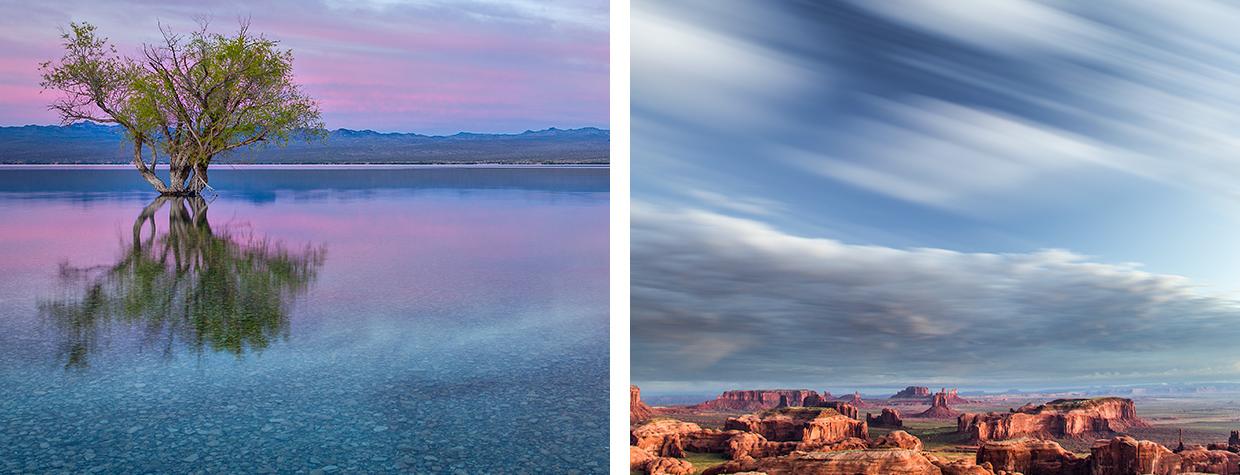ABOVE: Using a polarizer, as Derek von Briesen did here, can reduce surface reflections on water. In this case, it allowed him to capture the reflections of sunrise and the tree but also the river rocks just below the surface, making for a more three-dimensional image.
ABOVE, RIGHT: For this photo, Suzanne Mathia employed a neutral-density filter, which reduced the amount of light entering the lens. That allowed her to make a long exposure that rendered the fast-moving clouds as blurs.
We recently received a question about our contributing photographers’ use of filters in their work. Given the modern upgrades to digital sensors and advancements in postproduction software, it might be easy to assume that filters are a thing of the past. But I don’t get out and shoot as often as I once did, so I asked three of our regular shooters for input.
“When photographing with a large-format camera, I use many filters to overcome the limitations of film,” Claire Curran says, adding that warming filters, specialized color filters (to intensify some colors), and a variety of graduated filters and polarizers were all part of her repertoire when she worked with smaller film cameras as well. “These days, digital cameras and postproduction software have minimized my use of filters,” she says. “I now only use polarizers and neutral-density filters for longer exposures, and I have polarizers with neutral density built in, which works great for photographing lightning during the day. I rarely use graduated filters, because I prefer working on high-dynamic-range images in Photoshop.”
Derek von Briesen agrees that software and postproduction have come so far that some filters are less important than they once were. And while he still carries a full complement of filters, he says his most important one is the polarizer. Some of a polarizer’s effects — subtle increases in saturation to remove glare from reflective surfaces, or “dehazing” vast landscapes such as the Grand Canyon or Monument Valley — can’t be reproduced in Photoshop. Polarizers also allow a photographer to control reflections on the surface of water, allowing below-the-surface details, such as colorful rocks and shapes at the bottom of a stream, to mingle with surface reflections in a beautiful and intriguing way. Derek still uses graduated neutral-density filters in high-contrast situations, but he says he prefers making three to five exposures, then combining them in postproduction.
I also spoke with Suzanne Mathia, who still uses a polarizer, but only when needed. “I no longer use graduated neutral-density filters in the field, because no matter what you do, you’ll always get a darkening over trees and mountains that can’t be easily removed and leaves a telltale line across an image,” she says. “These days, it’s better to make two exposures and blend them later. If you’ve captured enough dynamic range in one shot, it’s easy to select parts of an image by color or luminance range, which makes applying small adjustments to areas of an image easier and more effective. The result is a more natural-looking photo.” That said, Suzanne occasionally uses neutral-density filters to make very long exposures. Doing so, she says, can produce spectacular effects.

